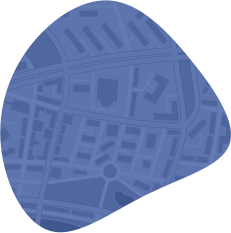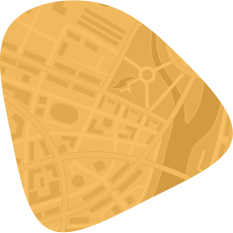
Whiplash is a common injury caused by car accidents. It occurs when the neck is rapidly whipped forward and backward, causing damage within the neck. It can also occur from sports accidents, physical abuse, or other traumatic events. While some people may experience symptoms immediately, others may not develop pain and stiffness until hours or even days after the injury.
Understanding whiplash's signs, symptoms, and potential complications is important for those who have been in a car accident, especially a rear-end collision. Read to learn the differences between whiplash and more severe traumatic cervical spine injuries, treatment options, and the importance of seeking prompt medical attention.
What are the common signs and symptoms of whiplash?
The sudden whipping motion of a motor vehicle collision can affect various structures within the neck, including muscles, bones, joints, tendons, ligaments, intervertebral discs, blood vessels, and nerves. The most common symptoms of whiplash include:
- Persistent or intermittent pain in the neck area.
- Reduced flexibility and difficulty moving the neck.
- Sensitivity to touch in the neck region.
- Pain that starts at the base of the skull and radiates towards the forehead.
- Feeling lightheaded or unsteady.
- Discomfort or aching in the shoulder area, possibly extending to the upper back.
- Generalized or specific areas of pain in the upper or lower back.
- Numbness or tingling in the neck, shoulders, or arms.
- Difficulty in turning the head from side to side or moving the neck up and down.
Some of the less common symptoms associated with severe whiplash injuries include:
- Tension headaches.
- Jaw pain.
- Sleep problems.
- Migraine headaches.
- Difficulty concentrating.
- Reading difficulties.
- Blurred vision.
- Dizziness.
How does whiplash differ from traumatic cervical spine injury?
While whiplash and traumatic cervical spine injury both involve damage to the neck, they differ in terms of severity and the specific structures affected. Whiplash is a mild to moderate neck injury that doesn't cause significant skeletal or neurological symptoms. On the other hand, traumatic cervical spine injury involves more severe damage, such as fractures or dislocations of the spinal bones, which can impact the nerves and spinal cord.
What is the Quebec classification system for neck injuries?
To better differentiate between the severity levels of neck injuries, the Quebec classification system categorizes neck injuries into five grades:
- Grade 0: No neck symptoms or physical examination signs.
- Grade 1: Neck pain and stiffness, with few findings from the physical examination.
- Grade 2: Neck pain, stiffness, tenderness, and decreased mobility or range of motion on physical examination.
- Grade 3: Muscle pain and stiffness, along with neurologic symptoms such as numbness, tingling, weakness in the arms, and decreased reflexes.
- Grade 4: Fracture or dislocation of the bones of the spinal column.
As the grades progress from 0 to 4, the severity of the neck injury increases. Grades 0 to 2 represent whiplash injuries, with varying pain levels, stiffness, and decreased range of motion but no significant neurological symptoms.
How is whiplash treated?
The treatment for whiplash depends on the severity of the injury and whether you're experiencing acute or chronic pain and stiffness. A combination of approaches may be used to alleviate symptoms and promote healing. This might include:
- Over-the-counter pain medications such as Acetaminophen (Tylenol) and nonsteroidal anti-inflammatory drugs (NSAIDs).
- Ice and heat therapy to reduce inflammation and pain and/or help relax tense muscles and improve blood flow.
- Maintaining regular movement and gentle exercises to prevent stiffness and promote healing.
- Physical therapy to strengthen the neck muscles, improve flexibility, and reduce pain.
- Chiropractic care to realign the spine, alleviate pressure on the affected nerves and discs, and promote healing.
- Acupuncture to stimulate the release of natural pain-relieving hormones, relax soft tissues, increase circulation, and reduce inflammation.
- In cases of severe structural damage to the spine or nerves, surgery may be necessary if you don't respond to conservative treatments.
What should I do if I sustained a serious spinal injury after a car accident?
If you've been involved in a car accident and sustained a serious injury, the steps you take in the aftermath of the accident can significantly impact your recovery. Seeking prompt medical attention allows for the early identification and treatment of your injury before it worsens. Plus, medical records can provide valuable evidence if you decide to pursue a car accident claim.
IMC Bone Doc is experienced in handling car accident injuries. With multiple locations throughout New York, we offer surgical treatment for those who have sustained spinal injuries and bone fractures. With a team of board-certified, fellowship-trained surgeons and state-of-the-art diagnostic equipment, IMC Bone Doc can provide:
- Prompt evaluation and diagnosis of injuries.
- Customized treatment plans.
- Convenient access to a full range of medical services.
- Detailed documentation of injuries and treatment to support insurance claims.
- Guidance and support throughout the recovery process.
If you're suffering from a structural injury after a car accident, don't wait to get medical treatment. Contact us online or call one of our New York locations to learn how we can help you.






















